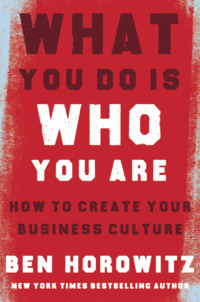What You Do Is Who You Are: How to Create Your Business Culture

Полная версия
What You Do Is Who You Are: How to Create Your Business Culture
Жанр: книги по психологиизарубежная деловая литератураисторическая литератураобщая психологиясерьезное чтениеоб истории серьезно
Язык: Английский
Год издания: 2019
Добавлена:
Настройки чтения
Размер шрифта
Высота строк
Поля
Конец ознакомительного фрагмента
Купить и скачать всю книгу


